Ask Ethan: how do we know the age of the solar system?
- Transfer
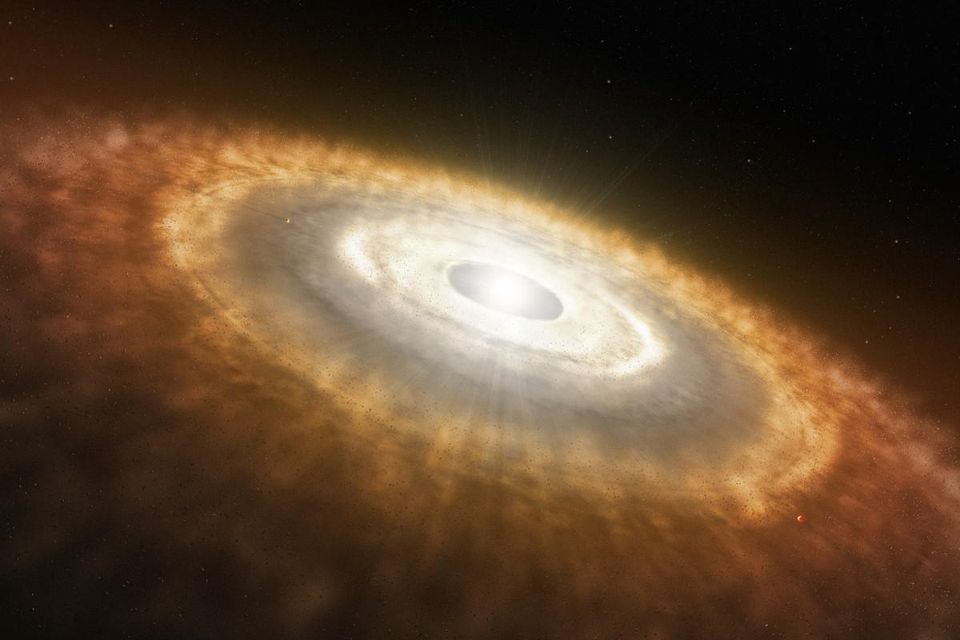
The artist's presentation of a young star surrounded by a protoplanetary disk. Protoplanetary disks belonging to sun-like stars have many unknown properties, including the elementary segregation of various types of atoms
Billions of years ago, in some forgotten corner of the Milky Way, a molecular cloud, not different from many others, shrank and formed new stars. One of them appeared in relative isolation, collecting material from the surrounding protoplanetary disk, which eventually turned into our Sun, eight planets and the rest of the solar system. Today, scientists say that the solar system is 4.6 billion years old, plus or minus several million. But how do we know that? Is age equal, say, to the Earth and the Sun? This is what our reader wants to know:
Where do we know the age of the solar system? I am very vaguely aware of the process of measuring the age of a stone since it was liquid, but about 4.5 billion years ago, Teya encountered a proto-earth, making almost everything liquid. How do we know that we determine the age of the solar system, and not just find dozens of new ways to determine the date of the collision with Teyya?
An excellent question, full of nuances - but science will cope with such a task. Here is the story of how everything was.
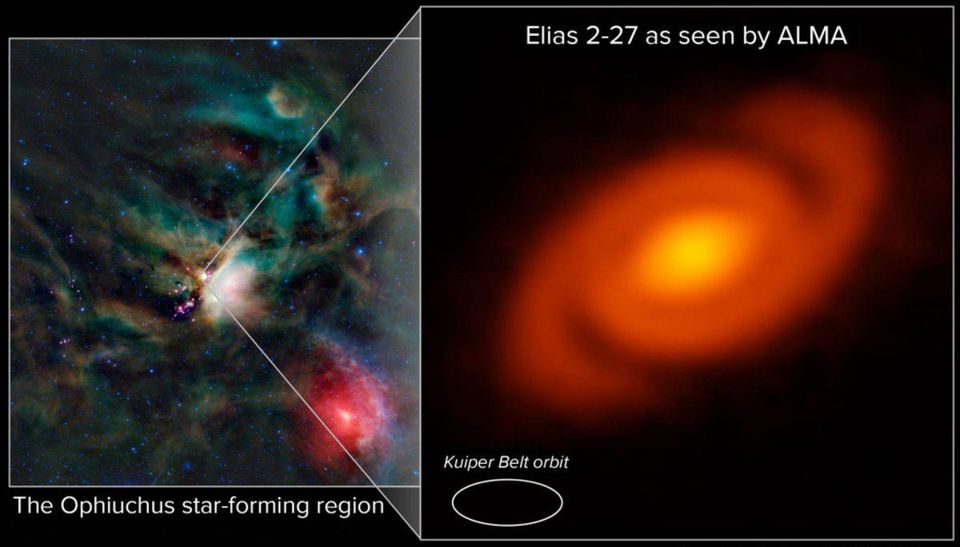
Gaps, lumps of matter, spiral forms and other asymmetries demonstrate evidence of the ongoing formation of planets in the protoplanetary disk around Elias 2-27 . However, what age will be in the various components of the system, which will be formed in the end, in general, you can not say.
We know quite a lot about the age and origin of our solar system. We learned a lot by observing the formation of other stars, studying distant regions of star formation, measuring protoplanetary disks, observing how stars go through different stages of the life cycle, etc. But each system develops in its own way, and here, in our solar system, billions of years after the appearance of the sun and planets, only the surviving objects remained.
Initially, all stars are formed from a pre-star nebula that gathers matter together, with a voluminous outer layer that remains cold, where amorphous silicates, carbon components, and ice are collected. As soon as a protostar appears in the pre-star nebula, and then a real star, this outer material begins to attract and form larger clumps.
Over time, lumps grow, move closer to the center, interact, merge, shift, and perhaps even throw each other out of the system. Over a period of time from hundreds of thousands to millions of years after the appearance of a star, planets appear - on a cosmic scale, this is quite fast. And although, probably, there were a lot of intermediate objects in the Solar System, after a few million years, the Solar System began to look very similar to what we have today.
But it could be very important differences. There could be a fifth gas giant; the four remaining giant could be much closer to the Sun, and then move further; and, most importantly, between Venus and Mars, most likely, there was not one, but two worlds: ProtoEarth and a smaller world the size of Mars, Theia. Much later, perhaps tens of millions of years after the formation of other planets, the Earth and Theia collided.
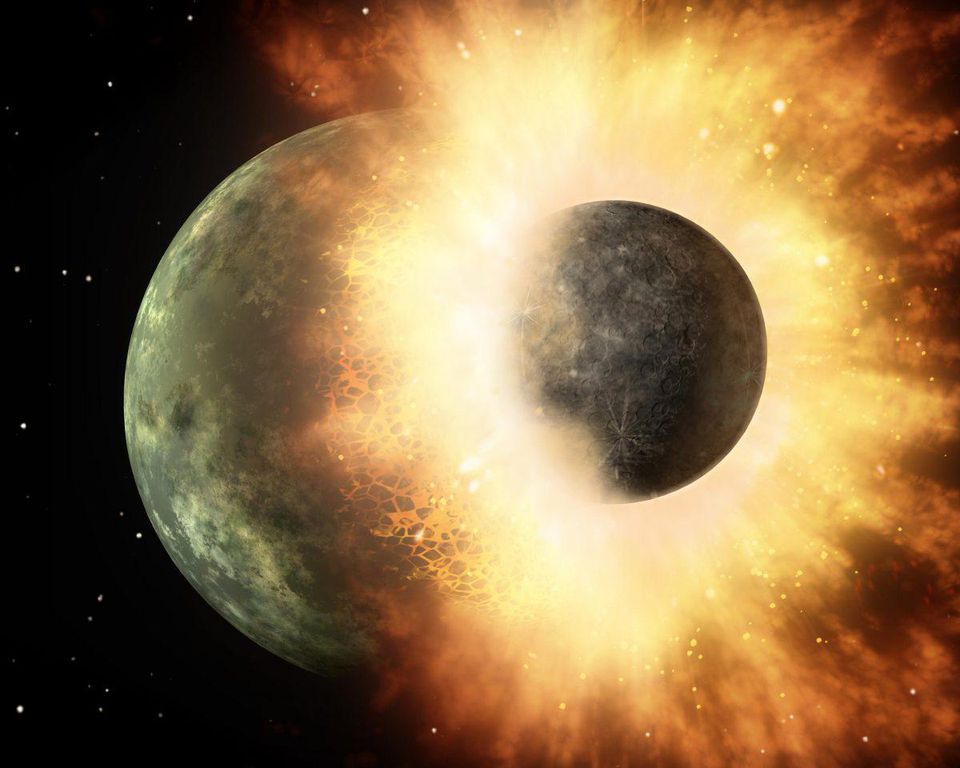
The shock formation model postulates that a body about the size of Mars collided with the early Earth, and fragments that did not fall back formed the Moon. The Earth and the Moon, as a result, must be younger than the rest of the Solar System.
It is in this collision, as we suspect, that the Moon appeared: we call this phenomenon the hypothesis of a giant collision. The similarity of the lunar stones brought by the Apollo mission with the terrestrial composition made us suspect that the Moon was formed from the Earth. Other stony planets that suspiciously lack large satellites most likely did not survive such major collisions in their history.
The gas giants, having a much larger mass than the rest, were able to hold on to the hydrogen and helium (the lightest elements) that existed when the solar system was just beginning to form; from other worlds most of these elements have blown away. Due to too much energy of the Sun and not enough strong gravity to hold them, the Solar System began to take shape we know today.
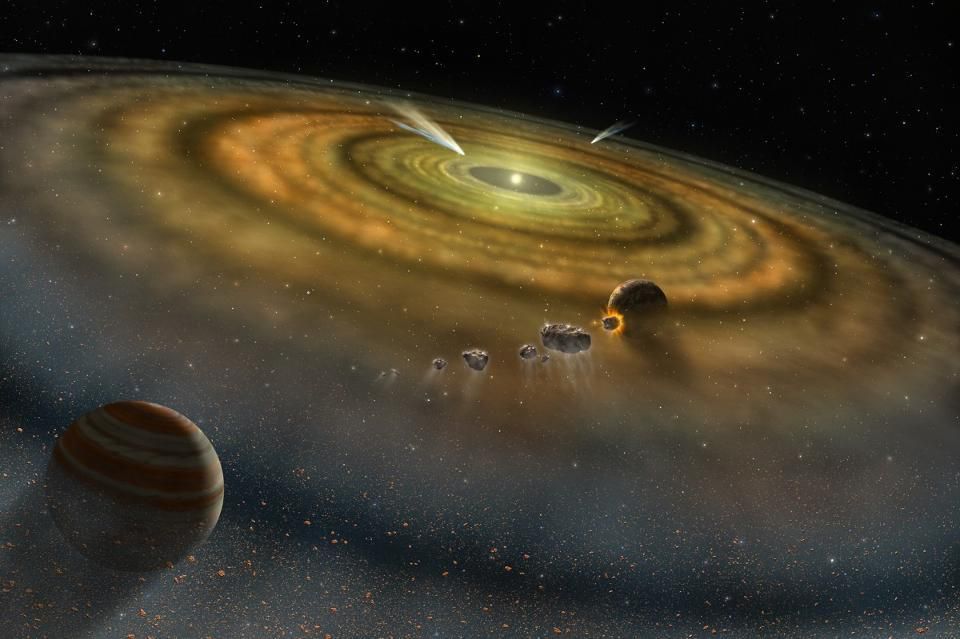
An illustration of the young star system Beta Painter , somewhat similar to our solar system, during its formation. The inner worlds will not be able to hold on to hydrogen and helium, unless they are massive enough.
But now billions of years have passed. Where do we know the age of the solar system? Does the age of the Earth coincide with the age of other planets; Can we find the difference?
The most accurate answer, surprisingly, gives geophysics. And this does not necessarily mean the physics of the Earth, it can be the physics of all kinds of stones, minerals and solids. All such objects contain many elements of the periodic table, and different densities and compositions correspond to where in the Solar system, in the sense of distance from the Sun, they formed.
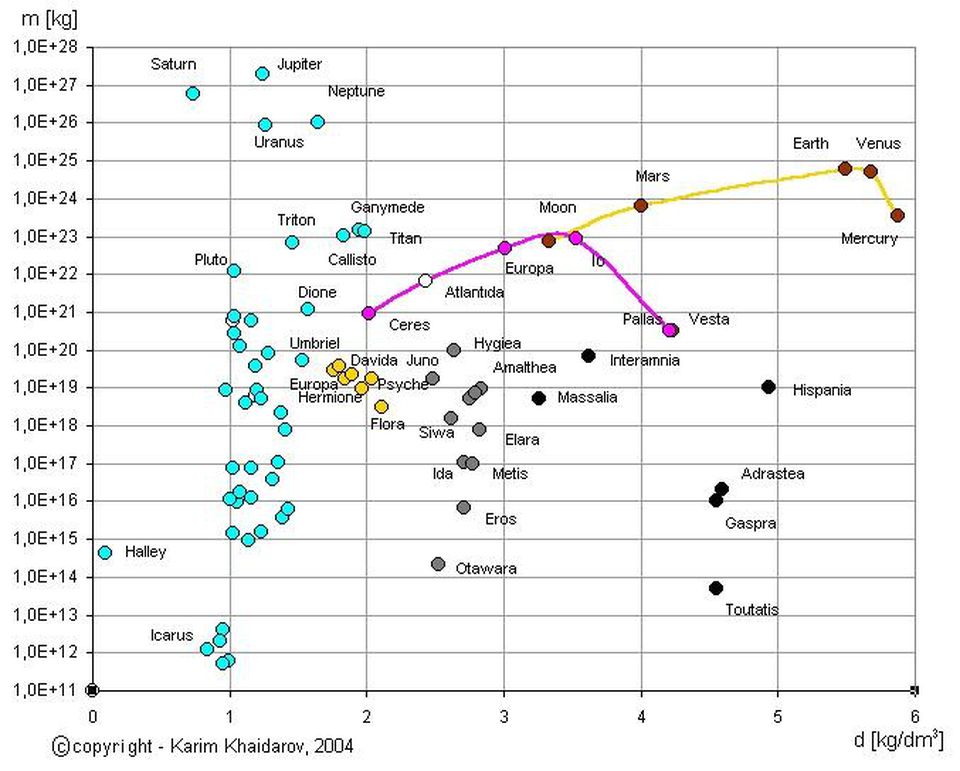
Densities of different bodies of the solar system. Notice the relationship between density and distance from the sun.
This suggests that different planets, asteroids, moons, Kuiper belt objects, etc. should consist of various materials. Heavy elements of the periodic table, for example, should mainly be present on Mercury, and not, say, Ceres, which, in turn, should be richer than Pluto. But it seems that the percentage of different isotopes of the same elements should be universal.
When forming the Solar system, a certain proportion should be maintained in it, say, carbon-12 to carbon-13 and carbon-14. Carbon-14, by cosmic standards, has a short half-life (several thousand years), so all the prehistoric carbon-14 has already disappeared. But carbon-12 and carbon-13 are stable, which means that when carbon is detected throughout the solar system, it must have the same relative isotope content. This applies to all stable and unstable elements, and isotopes of the solar system.

The number of elements in today's universe, measured in our solar system
Since the solar system is already billions of years old, we can search for isotopes with half-lives of billions of years. Over time, these isotopes will decay, and by studying the proportions of the decay products in relation to the initial remaining material, we can determine how much time has passed since the formation of these objects. For this purpose, the most reliable elements will be uranium and thorium. Uranium has two major, naturally occurring isotopes, U-238 and U-235, and they differ in products and decay rates, however, within billions of years. In thorium, Th-232 is the most useful isotope.
But the most interesting thing - the best evidence of the age of the Earth and the Solar System is not found on Earth at all!
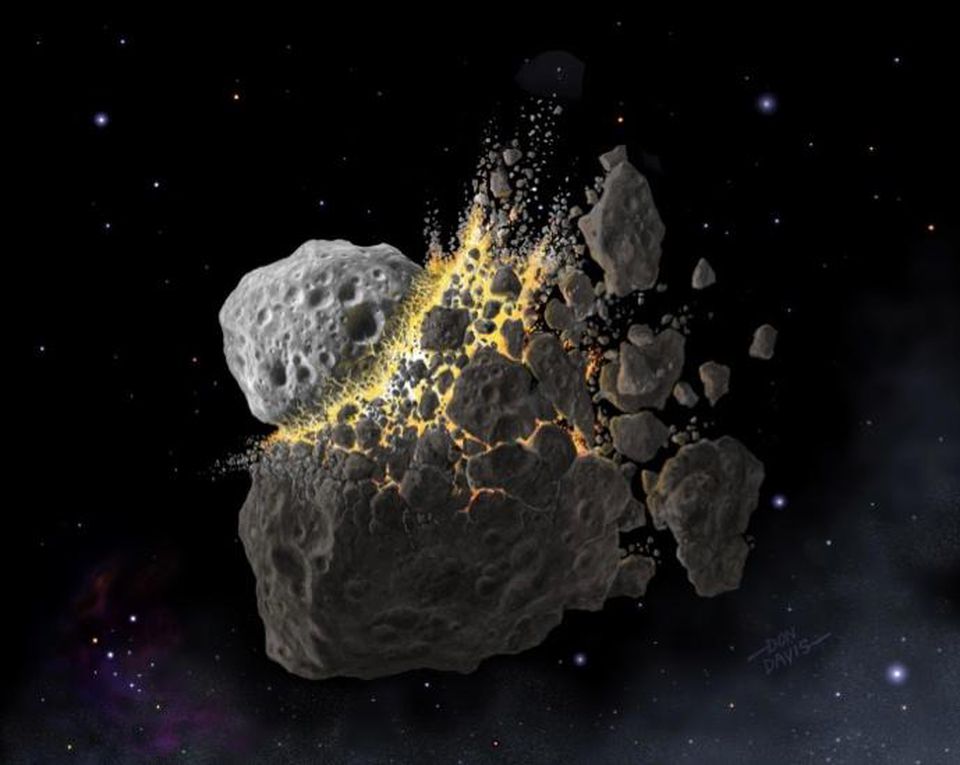
A drawing of the artist depicting a collision that 466 million years ago gave rise to many meteorites falling today.
A lot of meteorites fell to Earth, and we measured and analyzed their composition by elements and isotopes. We mainly observe lead : the ratio of Pb-207 to Pb-206 changes over time due to the decay of U-235 (which leads to the appearance of Pb-207) and U-238 (from which Pb-206 appears). Regarding the Earth and meteorites as part of one evolving system — that is, the ratios of the number of isotopes in them must be the same — we can look at the oldest lead ores found on Earth to calculate the age of the Earth, meteorites, and the Solar System.
This is a pretty good estimate, giving us a figure of about 4.54 billion years. The estimation error does not exceed 1%, but this is still an uncertainty of tens of millions of years.
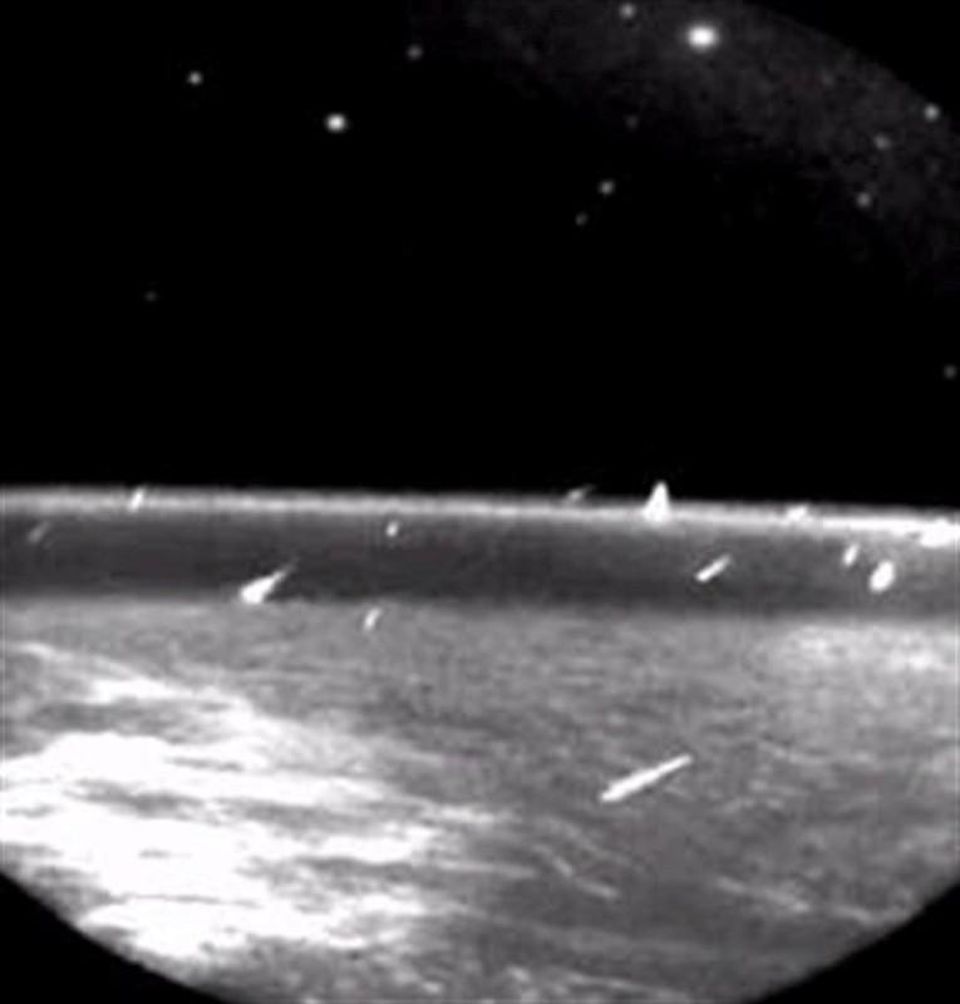
Meteor shower Leonids 1997 view from space. When meteors collide with the upper part of the Earth's atmosphere, they burn and generate bright lines and flashes of light, which we associate with meteor showers. Sometimes the falling stone is large enough to reach the surface and becomes a meteorite.
But we can do better than just putting everything together! Of course, this gives a good overall estimate, but we think that the Earth and the Moon are younger than meteorites.
- We can study the oldest meteorites , or those that demonstrate the largest ratio of lead isotopes, to try to estimate the age of the solar system. We will get a figure of 4.568 billion years.
- We can study moonstones that are not subject to geological changes that took place on Earth. Their age is 4.51 billion years .
And finally, we can check ourselves. All this was based on the assumption that the ratio of U-238 to U-235 is the same across the solar system. But new evidence from the past 10 years has shown that this is probably not the case.
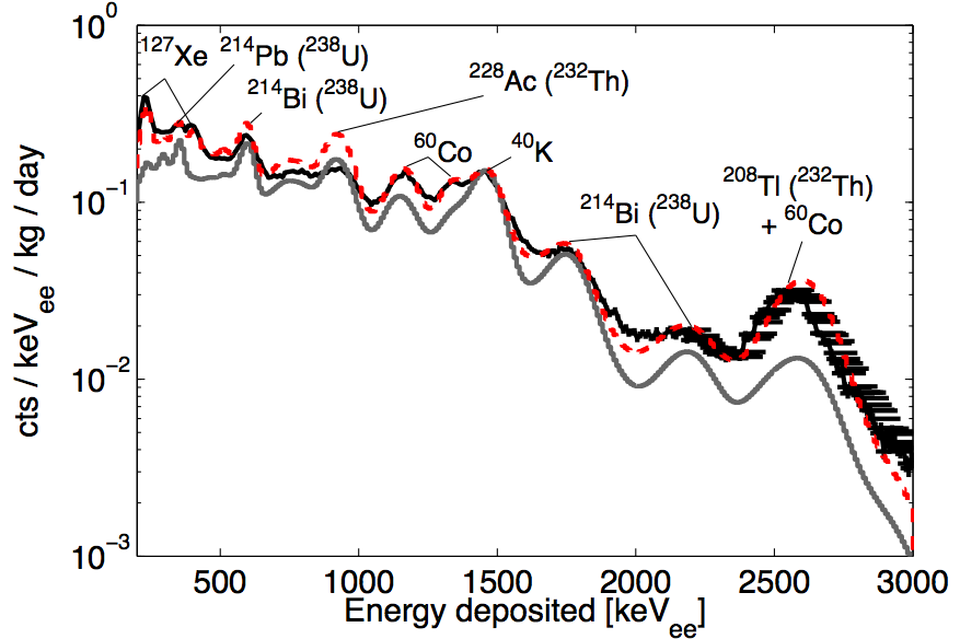
There are places where U-235 is enriched by 6% more than the typical value. According to Gregory Brenneck:
Since the 1950s, or even earlier, no one could detect differences in the proportions of uranium. Now we were able to find small differences. And this was a problem for several people in the field of geochronology. To say for sure that we know the age of the solar system based on the age of the stones, they must necessarily coincide with each other.But two years ago a solution to the problem was discovered: another element plays a role. Curium , an element that is heavier and with a shorter half-life than even plutonium, turns into U-235 when it decays, which explains these differences. As a result, the error [of determining the age] is only a few million years.

Protoplanetary disks, from which star systems are believed to form, will eventually assemble into planets, as in the figure. It is important to understand that the central star, individual planets, and the remaining original material (which, for example, can turn into asteroids), can differ in age by tens of millions of years.
So, in general, we can say that the oldest solid material known to us in the Solar System dates back to 4.568 billion years, with an error of 1 million years. Earth and the Moon are about 60 million years younger, they took their final form later. In addition, we cannot learn this by studying only the Earth.
But, surprisingly, the Sun may be a bit older, since its appearance must precede the appearance of solid objects that make up the remaining components of the Solar System. The sun may be tens of millions of years older than the oldest stones of the solar system, perhaps approaching the mark of 4.6 billion years. The main thing is to look for all the answers outside the Earth. Ironically, this is the only way to know the exact age of our own planet!
